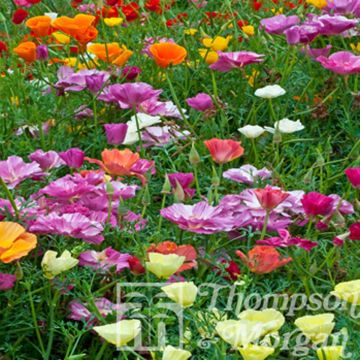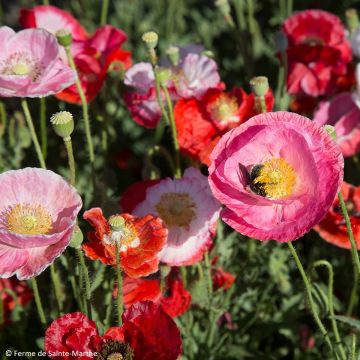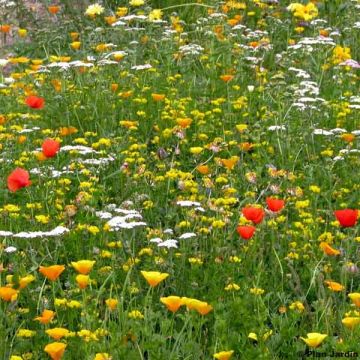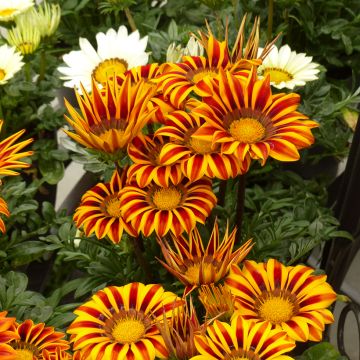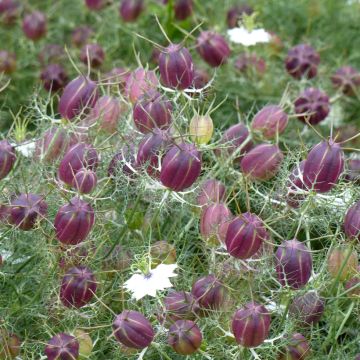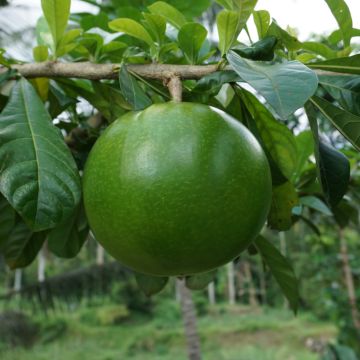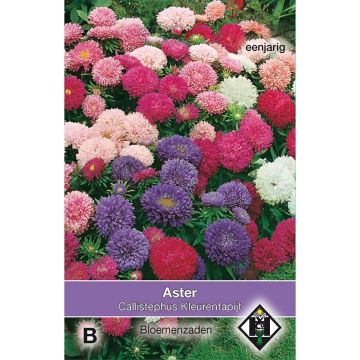

Argemone platyceras - Prickly Poppy


Argemone platyceras - Prickly Poppy
Argemone platyceras - Prickly Poppy
Argemone platyceras
Prickly Poppy, Crested Pricklypoppy, Horned Poppy
This item cannot be shipped to the selected country
Dispatch by letter from €3.90
More information
Schedule delivery date,
and select date in basket
This plant carries a 6 months recovery warranty
More information
We guarantee the quality of our plants for a full growing cycle, and will replace at our expense any plant that fails to recover under normal climatic and planting conditions.
Seed-only orders are dispatched by sealed envelope. The delivery charge for seed-only orders is €3.90.
Does this plant fit my garden?
Set up your Plantfit profile →
Description
The Argemone platyceras, sometimes called "thistle poppy," is a short-lived plant related to poppies that is quite attractive. Its large white flowers with a red centre and golden stamens bloom during a long spring to summer period, on ramified spikes that emerge from a thistle-like foliage. Native to the northern regions of Mexico and the southwestern United States, this curious poppy thrives in the sun and dry, poor soils where it naturalises quite easily.
The Argemone platyceras is an annual to biennial herbaceous plant, or even a short-lived perennial, classified in the family Papaveraceae. This botanical species is found in subtropical America, from Arizona and New Mexico to northern Mexico, between 450 and 2500 metres (1476 and 8202 feet) above sea level. Its natural habitat consists of rocky areas, slopes, fallow lands, and cultivated fields. Hardy down to -10 °C (14°F), this plant is perfectly adapted to fairly arid climates and poor, dry soils.
With rapid growth, this argemone reaches about 50-60 cm (20-24in) in height and 40-50 cm (16-20in) in width when flowering in just a few months. The plant, with a taproot, forms a rosette of basal leaves from which spiny leafy stems emerge. The leaves can measure up to 30 cm (12in) long and 13 cm (5in) wide. Those located towards the base of the plant are pinnate and deeply lobed with spiny edges. Their colour is a bluish grey-green. Flowering occurs between April and October, with a duration of three months. It will be earlier in warm and dry climates. The flowers are cups measuring 10 to 15 cm (4 to 6in) in diameter, carried at the ends of ramified spikes. The centre of the corollas, reddish in colour, is occupied by a beautiful bouquet of yellow stamens. After pollination by insects, the flowers give way to fruits that are ellipsoidal ovoid capsules measuring 2.5 to 4.5 cm (1 to 2in) long. They contain a large number of seeds that will be dispersed by the wind. These seeds easily germinate in sunny, well-drained soils.
The Argemone platyceras is ideal in a dry garden without watering, where it perpetuates itself through self-sowing. It is an excellent plant for dry rock gardens or gravel beds, also well-suited for coastal gardens. This short-lived plant, like love-in-a-mist and other poppies, is perfect for filling in unsightly embankments around new constructions. It forms beautiful, very floriferous clumps among lavenders, rockroses, and rosemary. It can be directly sown in open ground.
Report an error about the product description
Flowering
Foliage
Plant habit
Botanical data
Argemone
platyceras
Papaveraceae
Prickly Poppy, Crested Pricklypoppy, Horned Poppy
North America
Other Poppy seeds
Planting and care
Sow the poppy from April to May directly in open ground. Sow the seeds, very fine, in shallow holes spaced 50 cm (20in) apart, in a light soil, cleared of weeds and finely raked. After germination, when the young plants are sufficiently developed to be handled, thin out the sowings so that there is only one plant every 40 cm (16in). Where it thrives, in our regions where the winter is not too harsh, the crested poppy spontaneously reseeds itself. Elsewhere, it is entirely possible to collect seeds to sow them again in the following spring.
You can also sow in late summer directly in open ground in our mild regions.
Cultivation: the Argemone platyceras is moderately hardy, it perishes below -10 °C (14°F). This plant requires sunlight and perfectly drained soil, which does not retain water. Its preference is for light soils, rich in sand and/or poor in nutrients. Once well rooted, it perfectly withstands water shortage.
Sowing period
Intended location
This item has not been reviewed yet - be the first to leave a review about it.
Flower seeds
Haven't found what you were looking for?
Hardiness is the lowest winter temperature a plant can endure without suffering serious damage or even dying. However, hardiness is affected by location (a sheltered area, such as a patio), protection (winter cover) and soil type (hardiness is improved by well-drained soil).

Photo Sharing Terms & Conditions
In order to encourage gardeners to interact and share their experiences, Promesse de fleurs offers various media enabling content to be uploaded onto its Site - in particular via the ‘Photo sharing’ module.
The User agrees to refrain from:
- Posting any content that is illegal, prejudicial, insulting, racist, inciteful to hatred, revisionist, contrary to public decency, that infringes on privacy or on the privacy rights of third parties, in particular the publicity rights of persons and goods, intellectual property rights, or the right to privacy.
- Submitting content on behalf of a third party;
- Impersonate the identity of a third party and/or publish any personal information about a third party;
In general, the User undertakes to refrain from any unethical behaviour.
All Content (in particular text, comments, files, images, photos, videos, creative works, etc.), which may be subject to property or intellectual property rights, image or other private rights, shall remain the property of the User, subject to the limited rights granted by the terms of the licence granted by Promesse de fleurs as stated below. Users are at liberty to publish or not to publish such Content on the Site, notably via the ‘Photo Sharing’ facility, and accept that this Content shall be made public and freely accessible, notably on the Internet.
Users further acknowledge, undertake to have ,and guarantee that they hold all necessary rights and permissions to publish such material on the Site, in particular with regard to the legislation in force pertaining to any privacy, property, intellectual property, image, or contractual rights, or rights of any other nature. By publishing such Content on the Site, Users acknowledge accepting full liability as publishers of the Content within the meaning of the law, and grant Promesse de fleurs, free of charge, an inclusive, worldwide licence for the said Content for the entire duration of its publication, including all reproduction, representation, up/downloading, displaying, performing, transmission, and storage rights.
Users also grant permission for their name to be linked to the Content and accept that this link may not always be made available.
By engaging in posting material, Users consent to their Content becoming automatically accessible on the Internet, in particular on other sites and/or blogs and/or web pages of the Promesse de fleurs site, including in particular social pages and the Promesse de fleurs catalogue.
Users may secure the removal of entrusted content free of charge by issuing a simple request via our contact form.
The flowering period indicated on our website applies to countries and regions located in USDA zone 8 (France, the United Kingdom, Ireland, the Netherlands, etc.)
It will vary according to where you live:
- In zones 9 to 10 (Italy, Spain, Greece, etc.), flowering will occur about 2 to 4 weeks earlier.
- In zones 6 to 7 (Germany, Poland, Slovenia, and lower mountainous regions), flowering will be delayed by 2 to 3 weeks.
- In zone 5 (Central Europe, Scandinavia), blooming will be delayed by 3 to 5 weeks.
In temperate climates, pruning of spring-flowering shrubs (forsythia, spireas, etc.) should be done just after flowering.
Pruning of summer-flowering shrubs (Indian Lilac, Perovskia, etc.) can be done in winter or spring.
In cold regions as well as with frost-sensitive plants, avoid pruning too early when severe frosts may still occur.
The planting period indicated on our website applies to countries and regions located in USDA zone 8 (France, United Kingdom, Ireland, Netherlands).
It will vary according to where you live:
- In Mediterranean zones (Marseille, Madrid, Milan, etc.), autumn and winter are the best planting periods.
- In continental zones (Strasbourg, Munich, Vienna, etc.), delay planting by 2 to 3 weeks in spring and bring it forward by 2 to 4 weeks in autumn.
- In mountainous regions (the Alps, Pyrenees, Carpathians, etc.), it is best to plant in late spring (May-June) or late summer (August-September).
The harvesting period indicated on our website applies to countries and regions in USDA zone 8 (France, England, Ireland, the Netherlands).
In colder areas (Scandinavia, Poland, Austria...) fruit and vegetable harvests are likely to be delayed by 3-4 weeks.
In warmer areas (Italy, Spain, Greece, etc.), harvesting will probably take place earlier, depending on weather conditions.
The sowing periods indicated on our website apply to countries and regions within USDA Zone 8 (France, UK, Ireland, Netherlands).
In colder areas (Scandinavia, Poland, Austria...), delay any outdoor sowing by 3-4 weeks, or sow under glass.
In warmer climes (Italy, Spain, Greece, etc.), bring outdoor sowing forward by a few weeks.




































